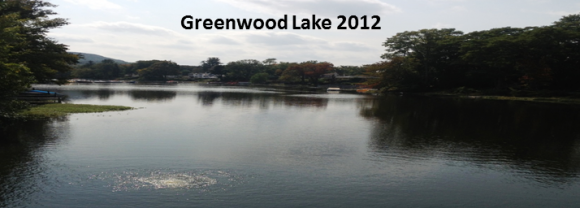50% Reduction in Milfoil, Algae and Organic Sediment in 4 Months






Greenwood Lake, NY
UPDATE 2014
In 2013 weed growth began to rebound in the treatment areas of Greenwood Lake. The decision to not run the system in the winter months for ice safety reasons, heavy Spring rains and the Village of Greenwood Lake’s decision to not budget for Biological Treatment of the aeration areas as prescribed by Lake Savers as part of the project were all contributing factors.
At Lake Savers, we did our best to get the situation back under control by applying Biological Augmentation Treatment at our expense in 2013. While progress was made, we were not able to clear the weed growth back to the pre 2013 levels. Lake Savers was able to document nutrient levels in the treatment area to show that excessive amounts of phosphorus was entering the treatment area in 2013.
When the Lake Bottom Aeration System was installed it was part of a larger storm water management system to control phosphorus entering the treatment area. Our best guess is that the heavy 2013 rains and lack of maintenance of the storm water management system were the drivers of the resurgent weed growth despite our best efforts.
In 2014, the new Village Administration decided to abandon the Lake Savers Program in favor of chemical herbicides. While we understand this decision and desire for a “quick fix” , we have the data and results to show the significant achievements in muck reduction, nutrient reduction and weed reduction for the first three years of the program.
As the program began to be diluted and deviated from, results suffered. We wish the Village of Greenwood Lake all the success with their new approach. Based on science and experience, we are confident that in time, the aeration program will be missed.
PROBLEM
- Out-of-control Eurasian Milfoil and algae choking lake-front properties, marinas, and beaches…
- Decades of accumulated organic sediment fueling weed and algae growth…
- Substandard water quality with noticeable rotten-egg smell.
SOLUTION
- Enacted 90 acre treatment plan
- Created supportive financing agreement
- Lake Bottom Aeration and Biological Acceleration installed July 2010
- Continuous results monitoring
RESULTS
- More than 50% Reduction in Total Phosphorus in less than four months…
- More than 50% reduction in organic sediment depth in less than four months…
- Milfoil canopy eradicated…
- Still improving after three years.
There was an error retrieving the YouTube video ID for the url you entered, please verify that the url is correct.
Greenwood Lake Restoration Story
For us, Greenwood Lake demonstrates both the effectiveness of our lake-saving technology, and our commitment as a company to collaborate with lake communities to restore their lake. In this project we worked closely with stakeholders to help them understand lake ecosystems, and design, implement and finance a comprehensive lake-saving strategy.
When we were initially contacted in 2007, the northern part of the 9 mile long lake was under siege from invasive Eurasian Water Milfoil which had appeared 10 years earlier. Out-of-control algae was choking the waterway surrounding lake-front properties, marinas, and beaches, and decades of accumulated decayed matter (“muck”) covered the lake bottom – in some places as much as 3’. Water quality was substandard and some areas of the lake had a noticeable fetid odor.
Previous to 2007, attempts were made to solve the problem with mechanical harvesting of weeds and temporarily reducing the lake’s water level in an effort to expose and kill weeds close to shore (“draw-downs”). By 2007, however, it was clear these methods were not winning the battle for the lake.
The Greenwood Lake Commission was formed and for the next three years (2007-2010), various options were reviewed, explored and debated. Proposed strategies included dredging, chemical treatment and even more aggressive harvesting efforts such as shortening the time period between “draw-downs.” In our 2007 presentation and subsequent collaboration, we explained that Greenwood Lake had a serious nutrient overloading problem which was the root cause of the lake’s deterioration.
While some on the commission saw the benefits of our solution, many were skeptical. In June of 2010 the Village of Greenwood Lake contracted with us to restore the northern part of the lake.
Our solution was implemented in the same month. We enacted a 90 acre treatment plan with a supportive financing agreement that enabled the Village of Greenwood Lake to (a) manage the cost over time and (b) ensure our management and maintenance of the system year after year.
60 days after installation the level of phosphorous, milfoil growth, and sediment smothering organic muck had been reduced more than 50% by volume and chemical composition. Needless to say, there were also dramatic improvements in water clarity and quality.






















